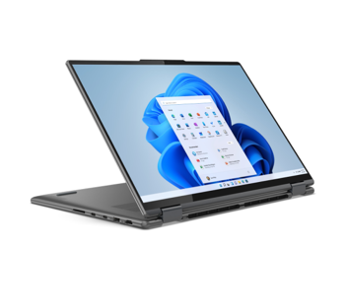Ready or not, it’s October 5, 2021 and that means Windows 11 is here. Let’s take a closer look at some of the big changes to the long-standing OS.
Based on insights from a member of the Windows team, “Windows 11 is designed and built as a complete set of experiences.” It includes updates in security, reliability, compatibility, video conferencing, multitasking, playing, creating, building, and learning, to name a few.
With a new Zero Trust Strategy, updated hardware device requirements, and the end of Internet Explorer, prepping for Windows 11 is a must for every organization. In fact, the new security features from Windows 11 are certainly raising the bar, and this may be one area where specific attention is required to ensure your business is ready.
Here are the three biggest changes we believe you need to be prepared for in the Windows 11 update.
Zero Trust Strategy
Microsoft is putting security first. This makes sense considering the consistent rise in cybersecurity threats. In fact, an estimated 30,000 websites are hacked daily across the globe, and the volume of ransomware attacks globally increased by 151% for the first six months of 2021 compared to the first six months of 2020.
With the implementation of the Zero Trust Strategy to help enterprises to protect their IT systems, CIOs and IT teams alike will need to learn how to navigate this new strategy to avoid roadblocks in day-to-day business operations. After all, as the name implies, zero trust means everyone needs to prove who they are every time they want to access a network or even documents saved within network folders. Without a plan in place, it can have a significant impact on productivity.
However, a zero trust policy will allow IT teams to operate endpoints outside of offices, as many IT departments have lost control of endpoints with employees’ work-from-everywhere expectations. According to the Director of Enterprise and OS Security at Microsoft, “Windows 11 is redesigned for hybrid work and security with built-in hardware-based isolation, proven encryption, and our strongest protection against malware.”
Preparing your organization for the transition to Windows 11 will require a look at existing security processes and a device health check to ensure your team is equipped with devices that can handle the update.
Hardware Updates
Implementing a Zero Trust Strategy across devices will require some device upgrades. In fact, Microsoft is increasing the hardware requirements substantially for Windows 11, much more than they did for Windows 10. For example, Microsoft now includes a TPM 2.0 chip in all certified Windows 11 systems to help customers leverage its security features.
Using a digital experience management solution can help your enterprise ensure all hardware devices are up to code and prevent any obstacles that could arise from the Windows 11 transition. Leveraging a solution that constantly monitors user endpoints enables your IT team to share actionable insights into how current devices and applications are running with Windows 11. These insights will enable you to accurately prioritize departments and personas that need device replacements the most.
While these new device requirements may bear a heavy burden, they are not the only big change coming.
The End of Internet Explorer
Alas, Internet Explorer use has come to an end; the long-running web browser will not be supported by Windows 11. While this may not be a shock for many, there is still housekeeping to be done to ensure this update won’t present any roadblocks to your enterprise.
First, your IT teams will need to identify if any web applications and users within your enterprise are still using Internet Explorer. Then, you will have to review and validate the performance of other browsers to find a replacement. This is where a digital experience management solution can help identify applications and websites that are consistently used with the help of Internet Explorer.
Be Prepared for Windows 11 Transition
The transition to Windows 11 will certainly feel different from past Microsoft updates. The introduction of a zero trust strategy, device upgrade requirements, and saying farewell to Internet Explorer are just a few of the changes we’ll see rolled out.
To better prepare your organization for the Windows 11 transition, and to navigate the transition more effectively, consider implementing a digital experience monitoring solution to help give you greater visibility into the end-user digital experience.
Original: Windows 11 is Here: What to Expect and How to Prepare | Aternity




